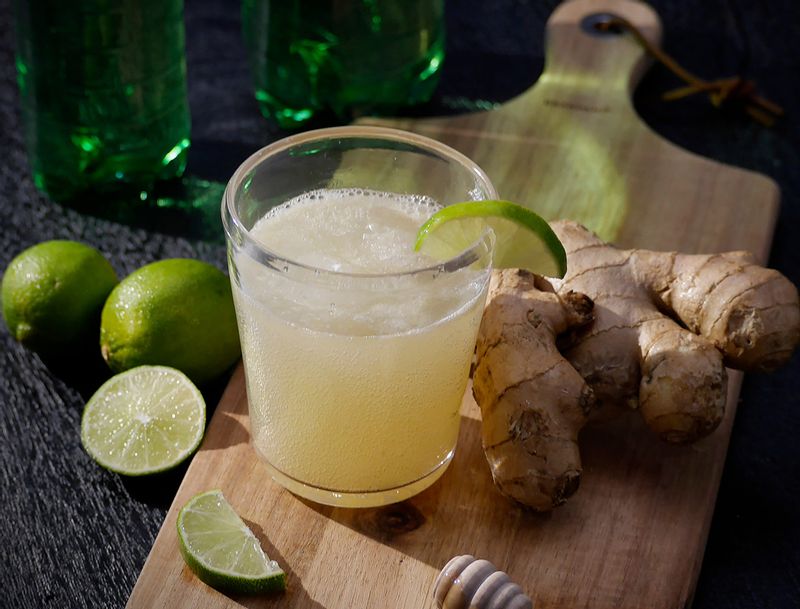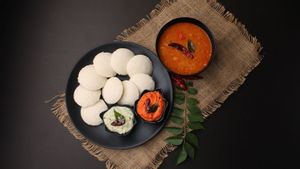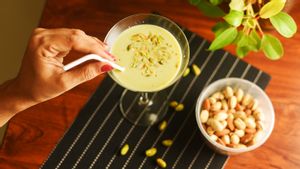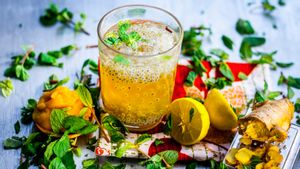The second wave of the pandemic was tough. Complete isolation prevailed and brought along dependency on spirits. Colas and sodas never featured on my drinking list and now, even the sugar from common mixers was creeping up on me. That’s when my tryst with producing my own home-fermented beverages began.
Humans have been consuming fermented foods and drinks since the birth of civilisation. Our breakfast tables often feature tea or coffee, followed by bread and butter, maybe some idli-dosa, or kulcha and yoghurt. Virtually everything is fermented. Ever wondered why fermented foods are consumed at the beginning of the day?
Fermentation and a healthy gut
In 5500 BC, the first thing a newborn was taught was the poem of Ninkasi, the Greek goddess of alcohol. Her poem was basically the recipe to make fermented drinks that you must consume to survive. At the start of civilisation, storage wasn’t scientific. Fermentation allowed the preservation of food and increased the shelf-life of scarce supplies. Water was polluted and foods contaminated, hence lightly fermented drinks were the only antidote.
Hippocrates famously said, 'all disease begins in the gut’. Striking the right balance among the millions of microbes in your belly helps heal both, mental and physical problems. Fermented drinks simply boost the microbes and enzymes that break bigger molecules, inducing digestion, optimising disbursement of nutrients, and rendering low toxicity. Grandmothers making jars of pickles, or kanji, is fermentation in its basic form.
It isn’t all jolly though, hence, toying with bacteria, cultures, yeast, and uncontrollable fermentation can be intimidating. Yet, it isn’t rocket science.
Getting started with fermentation

I had been making kombucha already splashing it over my Negronis. And then came ginger beer, a simple and oh-so-delish drink. Followed by more ferments - watermelon sodas, tepache, and mead; I treated them as my children. I’d feed my cultures and ginger bug every night before sleeping, see them grow, patiently wait for them to mature, only to show them off to the world.
Ginger bug (recipe below) once made can be used as a natural yeasty liquid to ferment any fruit juice. These juices already have sugars in them unlike ginger so no need to boil them. Just juice, strain, and bug them. Ginger beer is palatable and needs basic daily ingredients. Since it wasn't outright fruity and sweet, you can drink more of it. That spice and tang balance was very refreshing.
You will need to keep your mind open and be an optimist. A tiny alteration, oversight, or mistake at any part of the recipe will be amplified in the results. They can develop moulds, go aggressive or flat, turn into vinegar, or, worse, bottles can blast, sending you into the deep cleaning spree. But, hey, all that has never happened with me in the last year, so you may not have to worry.

There are two ways to start the fermentation process, either with a starter culture, say SCOBY in kombucha or curd in milk. Starting a natural ferment is easy and quite fool-proof. All you need is some form of sugar, ambient temperature, and oxygen, and the natural yeast in the air will do the magic. With cultures, there’s a little more care needed, and that’s what you can graduate to once you understand how nature works in the first place.
But, why try natural fermentation at all? Firstly, it’s gratifying. From the raw material to the resultant drink, the flavours alter completely. And with time, you can create customised and seasonal experiences. If you’re a cooking novice, this is your way to shine in the family without ever lighting a fire. Toy with temperatures, textures, gradients, and you’ll gather more respect for the process.
Checklist for fermented drinks

- Since microbes and bacteria are everywhere, clean up.
- Use only glass, never touch steel, iron, lead, or copper as they can cause poisoning.
- Always keep your hands, utensils, and surfaces sterilised.
- If you see a mould, discard it. If it tastes vinegary, discard it. If it smells funky, well, that’s how they smell! Read up a little bit and you should be fine. Not all moulds are bad, think of blue cheese.
- And finally, prevent explosions. Using airtight bottles to create fizz is essential but it is important to know how to control the fermentation. Try airtight soda bottles. Wine or water bottles aren’t meant to hold the fizz. Burp/de-gas the liquids periodically, which is essentially opening the caps/lids of the bottles each day in the initial phases, and store them in the fridge once the fermentation is over. This applies to all ferments.
Once you get into the game, you'll want to ferment everything. You will look at fruits, flowers, leaves, and herbs, differently. Flavour combos, trying a new technique, making new cocktails, and putting them to test will become second nature. You’ll naturally get off of the artificially flavoured and sweetened drinks, too. But don’t drink them like water. All you need is 100ml.
Ginger beer recipe
Ingredients:
Ginger bug
- 500 ml water
- 2 tbsp powdered sugar, heaped
- 3-inch ginger, roughly grated
Ginger beer
- 2-litre water
- 110 gm sugar
- Juice of 3 lemons
Method:
Ginger Bug
- In a plastic jar, take 500ml water. Add the powdered sugar and ginger.
- Cover, don't seal and keep it out.
- Repeat for 3 to 5 days, the ginger bug is ready.
Ginger Beer
- Boil 2 litres water. Turn off the heat.
- Add 60 grams grated sugar and simmer for 10 mins, no boiling. Add 150 grams sugar, and dissolve. Let it cool to room temperature.
- Add 60ml of ginger bug.
- Add the juice of 3 lemons.
- Bottle in airtight bottles, glass or plastic, and keep them outside.
- Burp them daily for 2 days. On the third day, chill, and drink. Even better, drink it as a Moscow Mule!
How to keep the Ginger Bug active
Take all the old ginger out. Add a new piece of chopped ginger and top it up with water. Keep in the fridge with the lid on. Feed it two spoons of sugar every week. It will live forever.






